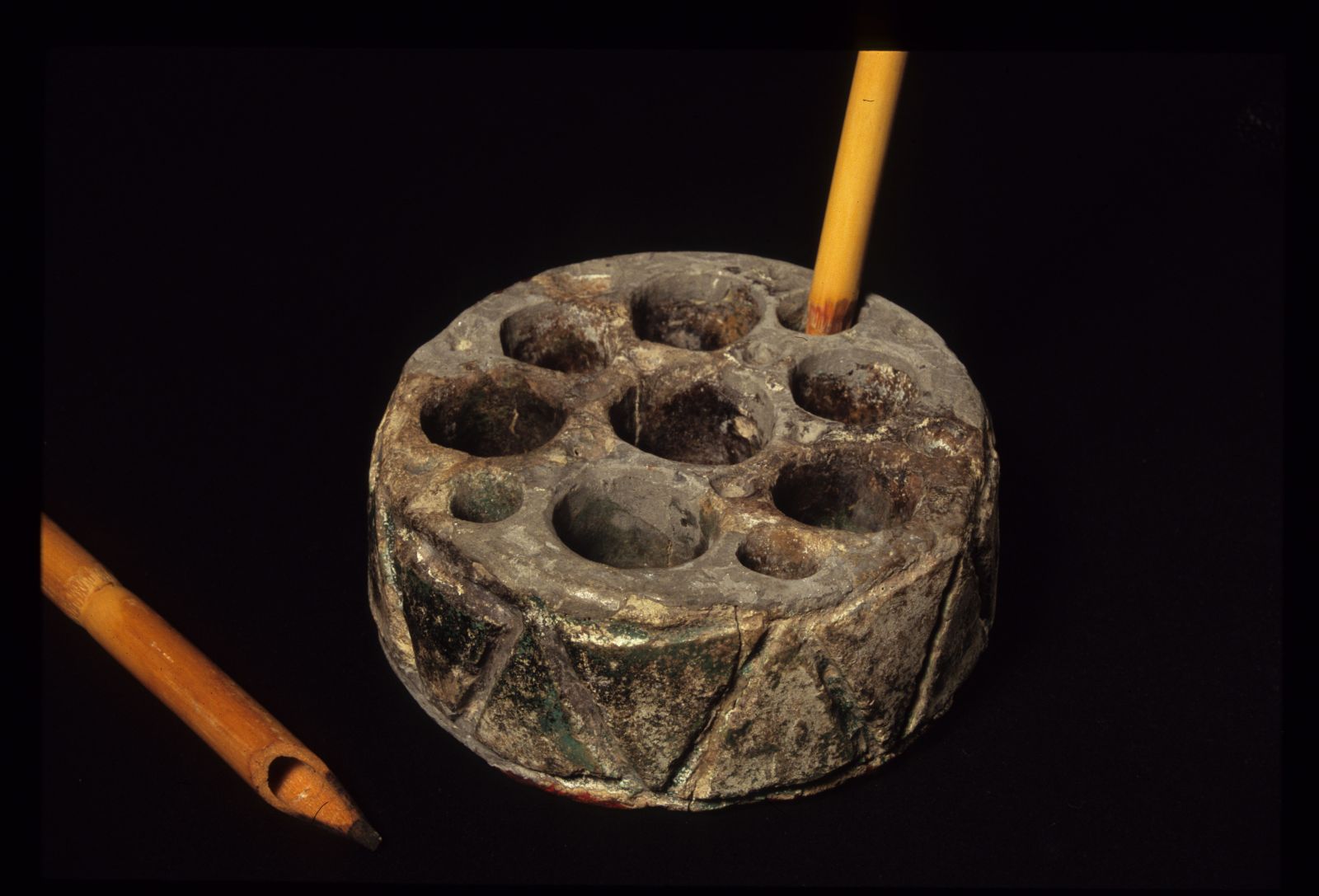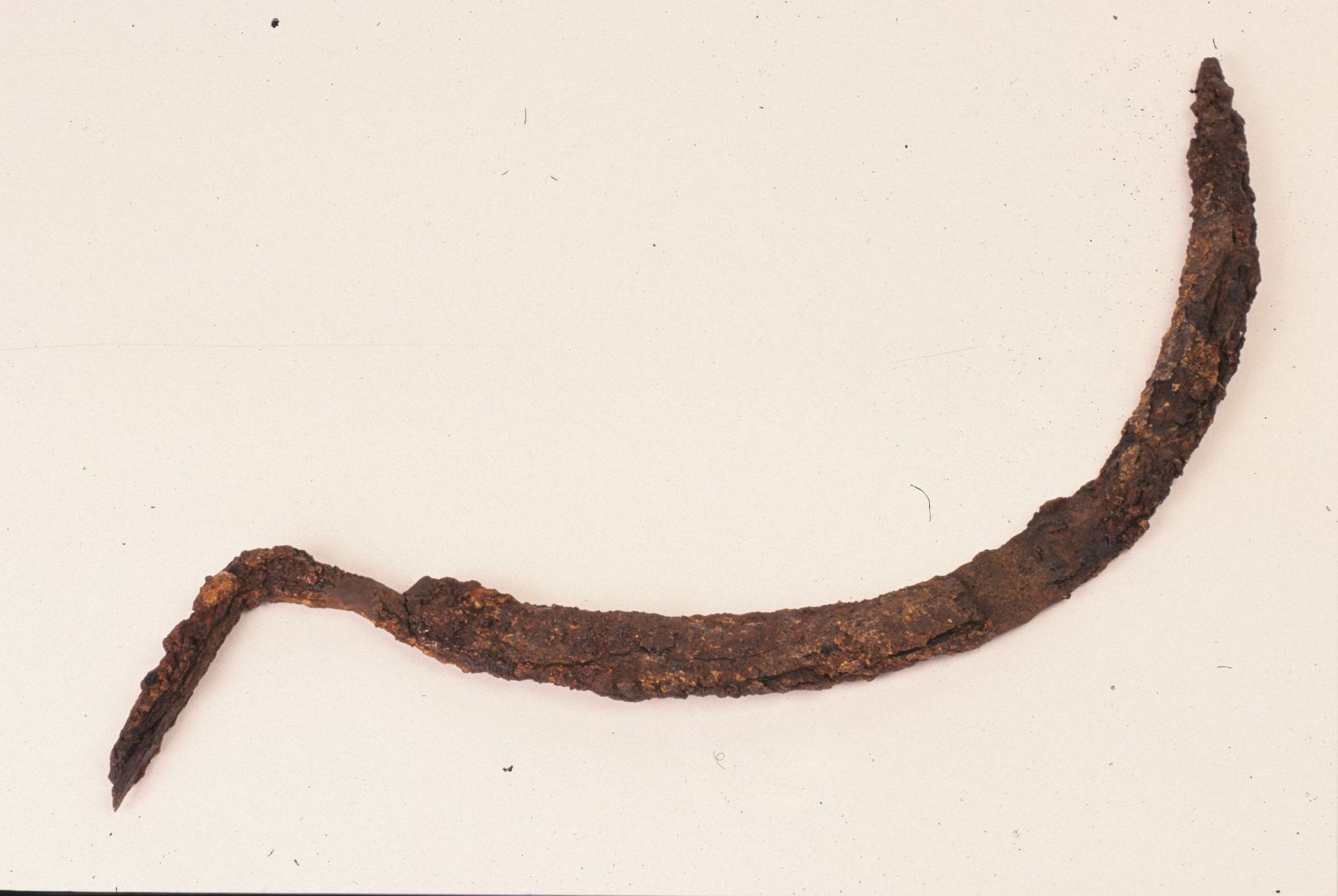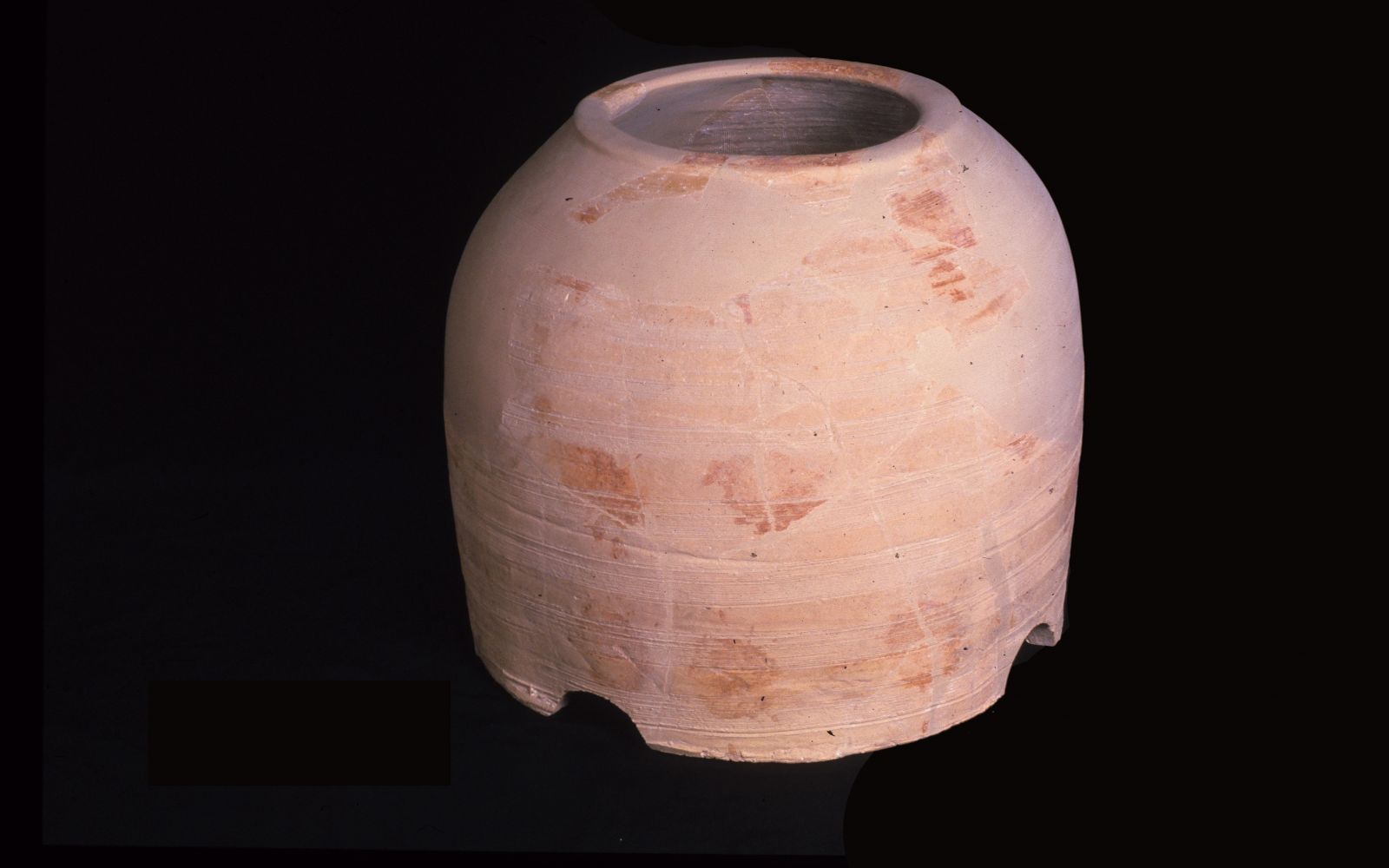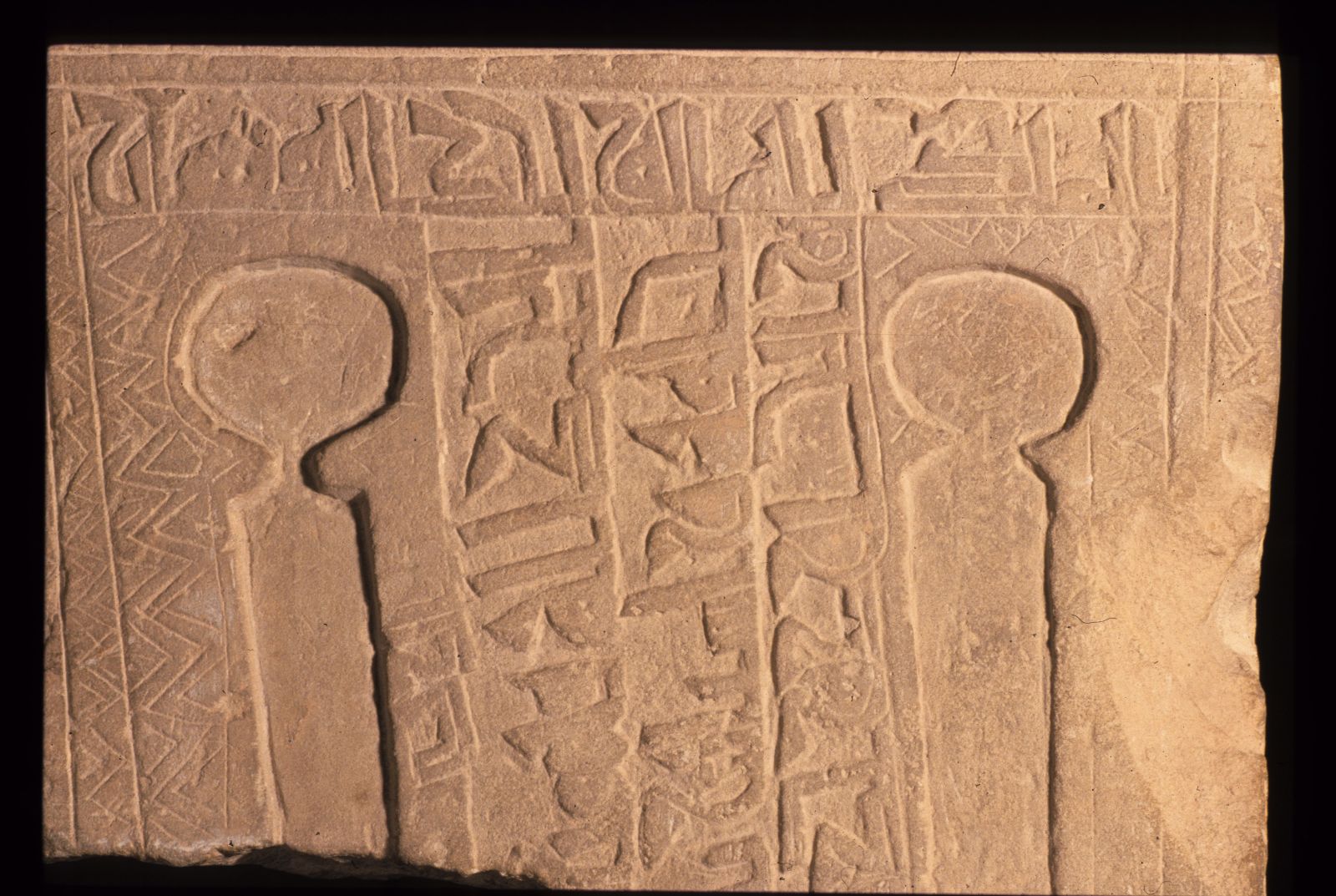PART INFORMATION
MODERN AGE
Name: Inkwell of the Torre Grossa Castle

Description: This is an inkwell. It has a flat base, a truncated cylindrical body, and is decorated with triangles. It has seven holes in the upper part. It is glazed in green. The clay used has a compact-textured, reddish-coloured paste with medium-sized mineral fillers.
Chronology: Medieval Islamic, 13th century.
Location: Torre Grossa Castle, Jijona.
Material: Ceramics
Technique: Lathe modelling. Incised decoration. Glazing.
Dimensions: Height, 4cm; maximum diameter, 10cm.
Name: Iron mowing sickle of the Torre Grossa Castle

Description: Iron sickle, almost semicircular in shape. The blade is narrow and triangular in cross-section. Smooth edge, no teeth or notches. Handle perpendicular to the blade.
Chronology: Late Middle Ages, (12th-15th centuries)
Location: Torre Grossa Castle, Jijona
Material: Iron
Technique: Casting and hammering
Dimensions: Length, 41cm; width, 2.5cm; thickness, 1cm. Weight: 221.6g.
Name: Portable bread baking oven from the Islamic pottery of Curtidores Street in Elche

Description: Tannur or portable bread oven. Made of ceramic, it has a cylindrical body and a thickened, pointed rim. The lower part of the oven has semi-circular windows that allow the ashes to be removed. It has two types of decoration: on the one hand, several bands of combed decoration, and on the other, iron oxide paint spread in patches all over the ceramic body. The interior of the tannur has bundles of vertical lines that allow the bread cakes to cling to the walls of the oven.
Chronology: Medieval Islamic, (10th-11th century)
Location: Islamic pottery in Calle Curtidores, Elche
Material: Ceramics
Technique: Lathe modelling, incised.
Dimensions: Height, 46.5cm; rim diameter, 31cm; maximum diameter, 54cm.
Name: Islamic tombstone of Alicante

Description: A stone tombstone of sepulchral character, opisthografic and written on both sides. Rectangular in shape. The inscription is accompanied by the decoration of two gates that imitate Islamic lobed-arch windows. The inscription is written in late kufic script. The inscription reads as follows: Front A: 'In the name of God, the Gracious, the Merciful. There is no divinity but God. This is the tomb of 'Alí or 'Isà or Yahyà bn Sa 'id bn....He died - may God have mercy on him - on the day of Thursday, seven days after the last day of Rabbi ' in the year nine and thirty-four hundred. Front B: "Praise be to God who decreed the expiration of His creatures and reserved perpetuity and eternity for Himself alone". "It belongs to God, the One, the Unconquered".
Chronology: 1 October 1047 AD.
Location: Unknown
Material: Stone
Technique: Polishing and carving
Dimensions: Height, 28.7cm; width, 35.2cm.

